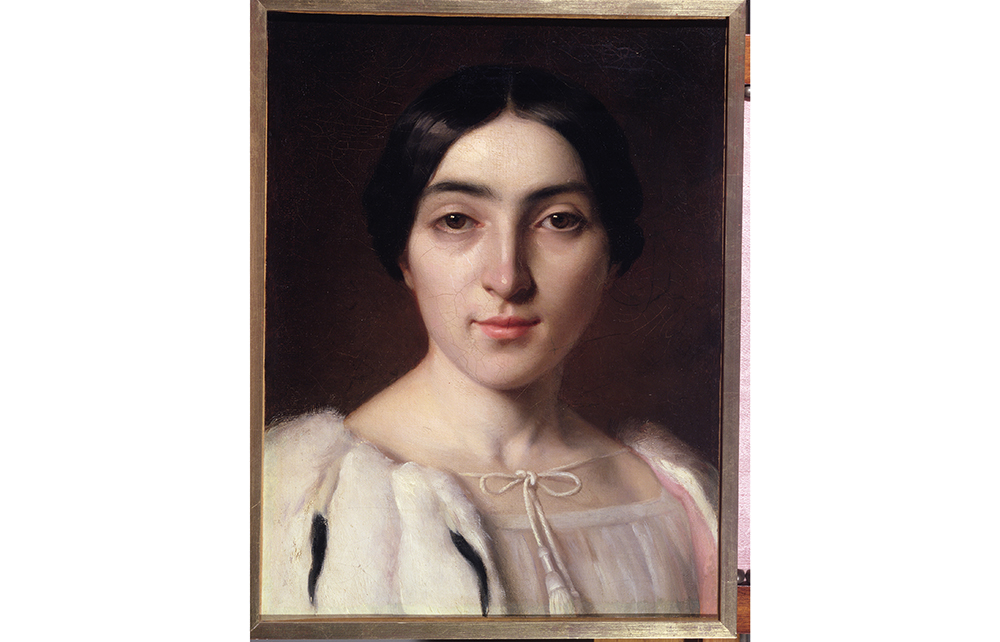In 1882, a sneaky reporter from the Figaro managed to track down Victor Hugo’s only surviving, long-forgotten child to an expensive mental asylum on the edge of Paris. He stalked her as she was being taken for a walk in the local park. She had the ‘profile of a duchess’, ‘staring black eyes’, a perilous hopping gait and odd compulsions. According to the reporter’s inside source, ‘Mme Pinson’ had spent a month removing all the rocks from the asylum’s long driveway and then replaced them one at a time. Thirty-three years later, she could still play the piano and claimed to be writing an opera titled Venus in Exile. She also enjoyed tearing up the pages of books and stuffing the confetti into her bag.
It was not until the 1940s that a Canadian scholar pieced together the thousands of sheets of coded scribble which told her story. Mark Bostridge, the biographer of Vera Brittain and Florence Nightingale, first became fascinated with the tale when he discovered François Truffaut’s L’Histoire d’Adèle H and saw this fragment of her diary projected on the screen: ‘That incredible thing – a young woman, enslaved to the point of not being able to go out alone for five minutes to buy some paper… to fly over the sea, to pass from the old world to the new to rejoin her lover. This I will do.’
Adèle became infatuated with Albert Pinson. They touched legs and bonded over a Ouija board
Balzac met the 13-year-old Adèle at Hugo’s house in the Place Royale in Paris. Writing to his future wife, he pronounced the girl ‘the greatest beauty I shall ever see’. Charles Dickens saw her in the same theatrical, funereal drawing room when she was 17: ‘The wife is a handsome woman with flashing black eyes, who looks as if she might poison [Hugo’s] breakfast any morning when the humour seized her. There is also a ditto daughter of 15 or 16, with ditto eyes, and hardly any drapery above the waist, whom I should suspect of carrying a sharp poignard in her stays, but for her not appearing to wear any.’
Banished from France after the coup of Louis-Napoléon Bonaparte in 1851, Hugo would spend about a quarter of his 83 years in the Channel Islands. On Jersey, Adèle became infatuated with an English lieutenant, Albert Pinson. They touched legs and bonded over the Ouija board which put her father in touch with his fellow visionaries, including the miraculously francophone Homer, Isaiah, St Paul, Androcles’s lion and Shakespeare. Adèle served as the scribe. The spirit-infested house on the edge of the ocean was not a healthy setting for a fragile mind. When Pinson went abroad, she followed him, first to Halifax, Nova Scotia, and later to Barbados, where she sank deeper into squalor and unreality.
Adèle tried everything: she offered bribes, tried to make him jealous, claimed to be pregnant and threatened suicide. She also considered using hypnosis. Thanks to Pinson’s descendants, Bostridge has been able to obtain two photographs of Pinson, whose face was not previously known. Only in romantic fiction is the object of obsession an Adonis. The photographed Pinson has narrow eyes, a neutral expression and a large, shovel-shaped beard. The man who was loved against his will married the daughter of an army officer in 1870. Shortly before his marriage, still unable to shake Adèle off, he pleaded with her brother François-Victor to save him from ‘the annoyances’ she had caused him ‘for the past eight years’. He seems to have acted as charitably as the situation allowed. Only as a last resort did he threaten to challenge the brother to a duel.
Bostridge elegantly and poignantly interweaves tales of amorous grief and mental illness: Adèle’s ocean-spanning pursuit of Albert; Truffaut’s cinematic stalking of the young Isabelle Adjani in her first film role; his own father’s infidelities which enabled him to ‘hone’ his ‘biographical skills’ at a young age. After years of Adèle-related expeditions, Bostridge’s partner testily calls the cherished object of the seemingly unfinishable book ‘The English Lieutenant’s Frenchwoman’.
Bostridge knows the art of introducing his anxious self into the narrative without lapsing into sentimental selfie-taking. On one research trip, at the Morgan Library in New York, he is presented with a photograph of Adèle left over from an exhibition. The reproduction turns out to be rather large. Leaving the library, he staggers along Madison Avenue with Adèle H strapped to his body like a sandwich board. On hearing of this, his suffering partner wonders if perhaps the ‘one-sided love affair’ has gone too far: ‘You don’t seem to be able to shake her off, do you?’






Comments